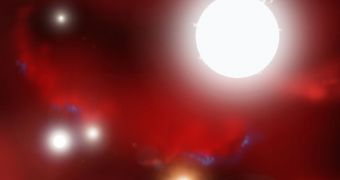According to the results of a new, complex series of calculations, the best time to study the Universe has long since passed. The ideal moment for such research, when we could have obtained the largest amount of useful data, was around 500 million years after the Big Bang.
Though we are more than 13 billion years late, all is not lost. We can still learn much about the original events that set the Cosmos in motion, and led to the creation of galaxies and other large-scale structures, but critical data on exactly what happened after the Big Bang may have already been lost.
The conclusion belongs to a study conducted by Avi Loeb, a cosmologist and theorist at the Harvard-Smithsonian Center for Astrophysics (CfA). The organization is a joint collaboration between the Smithsonian Astrophysical Observatory and the Harvard College Observatory.
At this point, we do know that the Universe initially contained a hot mixture of plasma-like material, which eventually began to accumulate around small centers of gravity, or perturbations in the available matter mass. These gravitational clusters eventually led to the emergence of the first stars and galaxies.
According to Loeb, we no longer have access to a wealth of data related to how the Universe behaved during its first few hundred million years. The more time passes, the less data is available about this critically important period in the cosmic evolution.
“I'm glad to be a cosmologist at a cosmic time when we can still recover some of the clues about how the Universe started,” Loeb says. He explains that the formation of the first stars and galaxy led to the loss of data on the first moments of the Universe.
Loeb says that we are still capable of detecting data from the earliest times in the Cosmos by scanning for 21-centimeter radio emissions from hydrogen that existed at that time. Astrophysicists say that these emissions take more than 13 billion years to reach us, so they still carry a lot of useful information.
“21-centimeter surveys are our best hope. By observing hydrogen at large distances, we can map how matter was distributed at the early times of interest,” the CfA investigator explains. He adds that cosmologists of the future will have access to even fewer data than we do.
This phenomenon is largely caused by the ever-accelerated cosmic expansion, which pushes galaxies, clusters and superclusters further away from each other, limiting the number of objects that surveys can reveal.
“If we want to learn about the very early universe, we'd better look now before it is too late!” Loeb concludes in a paper published in the latest online issue of the Journal of Cosmology and Astroparticle Physics (JCAP).

 14 DAY TRIAL //
14 DAY TRIAL //